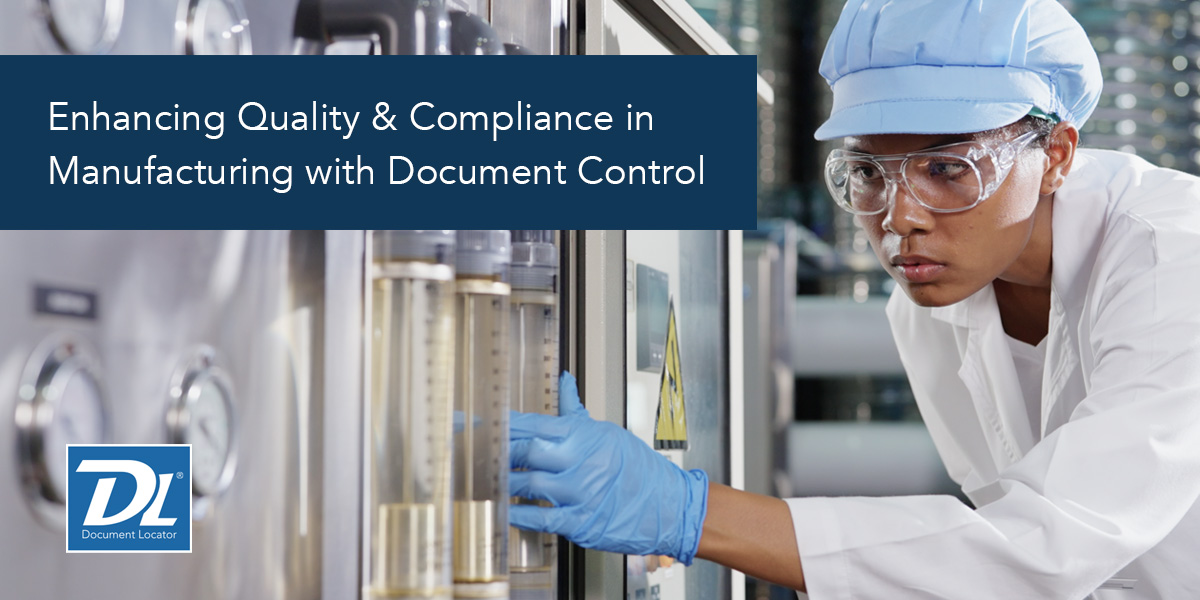In manufacturing, maintaining high standards of quality and compliance is crucial. Key practices such as document control, quality assurance, records management, and training play a vital role in ensuring that all processes are efficient, accurate, and up to date. A robust document control system aids in implementing these practices by centralizing documents and streamlining workflows. This article explores how these practices can address common challenges in manufacturing, enhance operations, and support continuous improvement, ultimately leading to enhanced product quality and regulatory compliance.
The Role of Documentation in Manufacturing for Quality and Compliance
Manufacturing operations face significant challenges in maintaining quality control. Issues such as inconsistent processes, human errors, and miscommunication often lead to defects and non-conformities, compromising product integrity and operational efficiency. These challenges can result in significant financial losses, including the costs of waste, rework, and recalls, as well as indirect costs such as lost sales and decreased customer satisfaction.
Robust document control can address these challenges by ensuring that all manufacturing documents are accurate, accessible, and current. It helps streamline the management of documents, preventing the use of outdated procedures and instructions. By implementing a centralized document control system, manufacturers can enhance collaboration and communication among team members, ensure compliance with regulatory standards, and support continuous improvement initiatives. This leads to improved operational efficiency, reduced risk of defects, and higher overall product quality.
Compliance with standards such as ISO, FDA, cGMP, and other industry-specific requirements is non-negotiable. Document control is crucial for audits and quality assurance assessments. It ensures that manufacturing processes are verifiable and traceable, helping companies demonstrate compliance. By maintaining precise and up-to-date documentation, manufacturers can effectively manage regulatory requirements and enhance their operational integrity.
Key Practices for Enhancing Quality and Compliance in Manufacturing
Document control, quality assurance, records management, and training collectively underpin the essential aspects of manufacturing operations. These practices ensure that processes are efficient, compliant with industry standards, and continually improving:
- Document Control: Effective document control ensures documents are accurate, accessible, and up to date. This prevents outdated procedures, reduces defects, and supports continuous improvement. A centralized document control system streamlines document creation, review, approval, distribution, and archival, enhancing consistency and communication.
- Quality Assurance: Accurate documentation provides clear guidelines and traceability for activities like SOPs, work instructions, and quality control checklists. It helps identify and resolve deviations through Non-Conformance Reports (NCR) and Corrective Action Reports (CAR), promoting effective change management.
- Records Management: Systematic storage and management of records, including production data and audit trails, enhance operational efficiency and compliance. A unified records management system reduces information silos, facilitating seamless data sharing and informed decision-making.
- Training: Properly managed training documentation ensures a competent workforce. It supports compliance with industry standards, enhances performance and safety, and fosters continuous workforce development.
The Benefits of Document Control Software for Manufacturing
Implementing a document control software system can aid in these key practices by ensuring that all documents are accurate, accessible, and current. The software centralizes documents and streamlines the creation, review, approval, distribution, and archival processes. Below are some of the top benefits of document control software for manufacturing:
- Quality Assurance: Keeps SOPs and quality manuals current, accessible, and accurate.
- Regulatory Compliance: Manages document access and revisions in a traceable and auditable manner.
- Enhanced Collaboration: Provides a central repository for all documents, facilitating teamwork across departments and locations while reducing information silos.
- Efficiency and Productivity: Automates workflows, reducing the need for manual document management processes.
- Risk Management: Ensures only current, approved documents are used, preventing accidents and product failures.
- Knowledge Management: Captures and shares critical information across the organization.
- Continuous Improvement: Systematically documents changes and outcomes, supporting ongoing improvement initiatives.
- Audit Readiness: Maintains comprehensive logging and version control for easy audit preparation.
- Security and Data Protection: Protects sensitive data from unauthorized access.
The Path to Manufacturing Excellence
Effective document control, quality assurance, records management, and training are critical practices for manufacturing operations. Implementing a document control software system helps centralize and streamline these practices, addressing common challenges in manufacturing and supporting continuous improvement. By enhancing collaboration, ensuring compliance, and protecting data, document control software leads to higher product quality, improved operational efficiency, and greater regulatory compliance. Embracing these practices is essential for any manufacturing organization aiming to achieve operational excellence and maintain a competitive edge in the industry.
Download the Free Guide
For a more in-depth understanding of how document control can enhance quality and compliance in manufacturing, download our comprehensive free guide, “A Manufacturer’s Roadmap to Quality with Document Control.”
GET GUIDE


